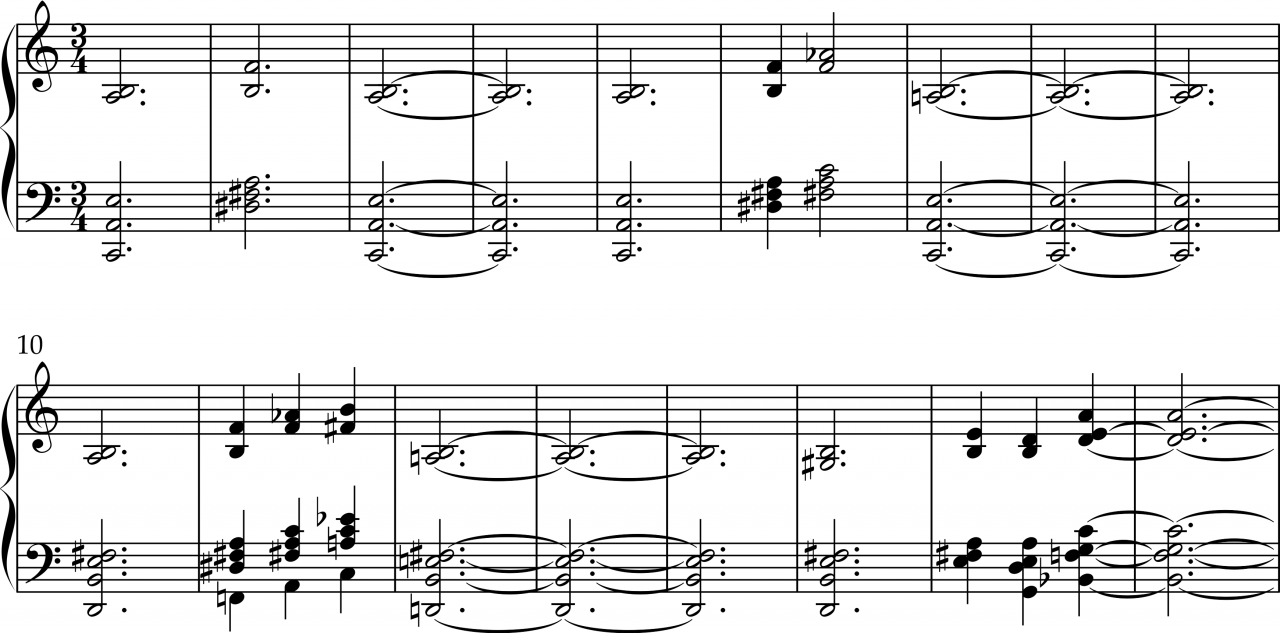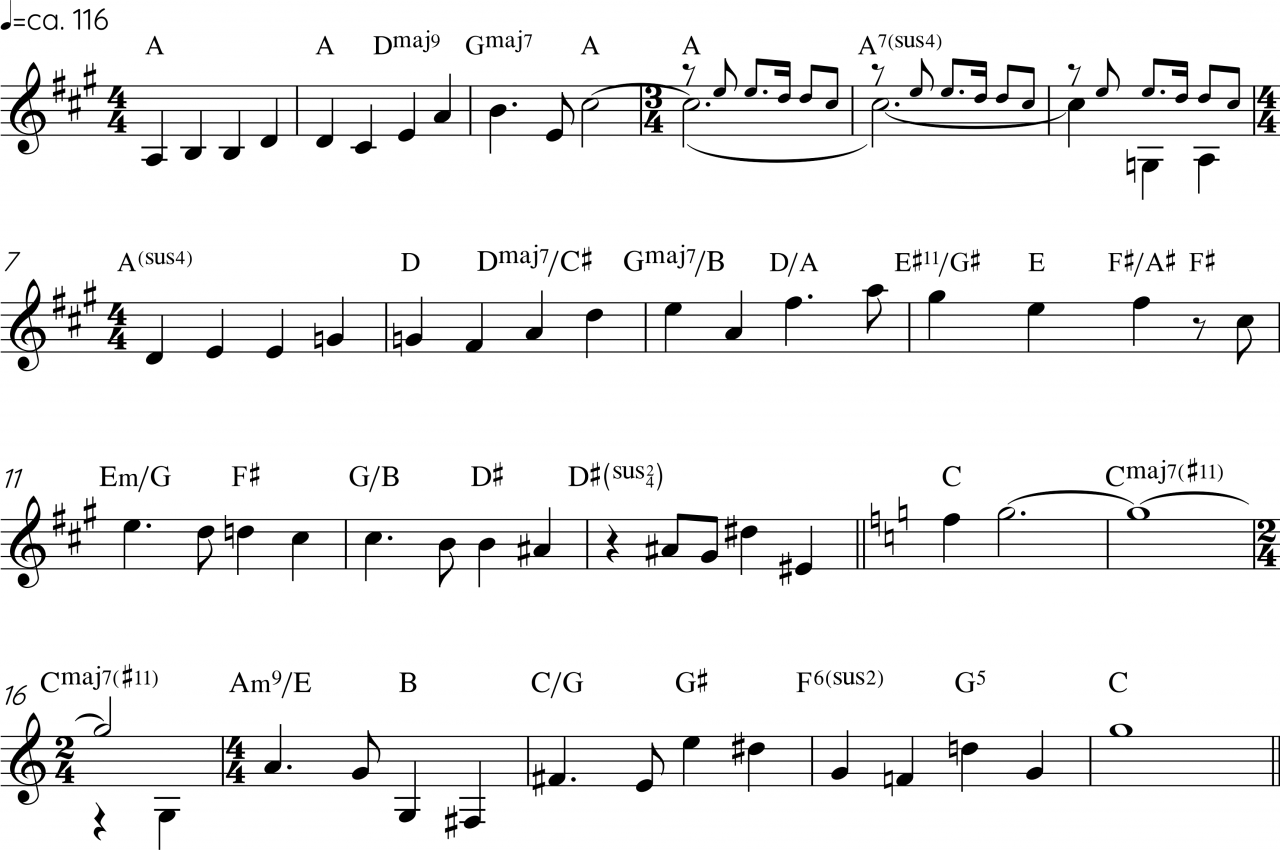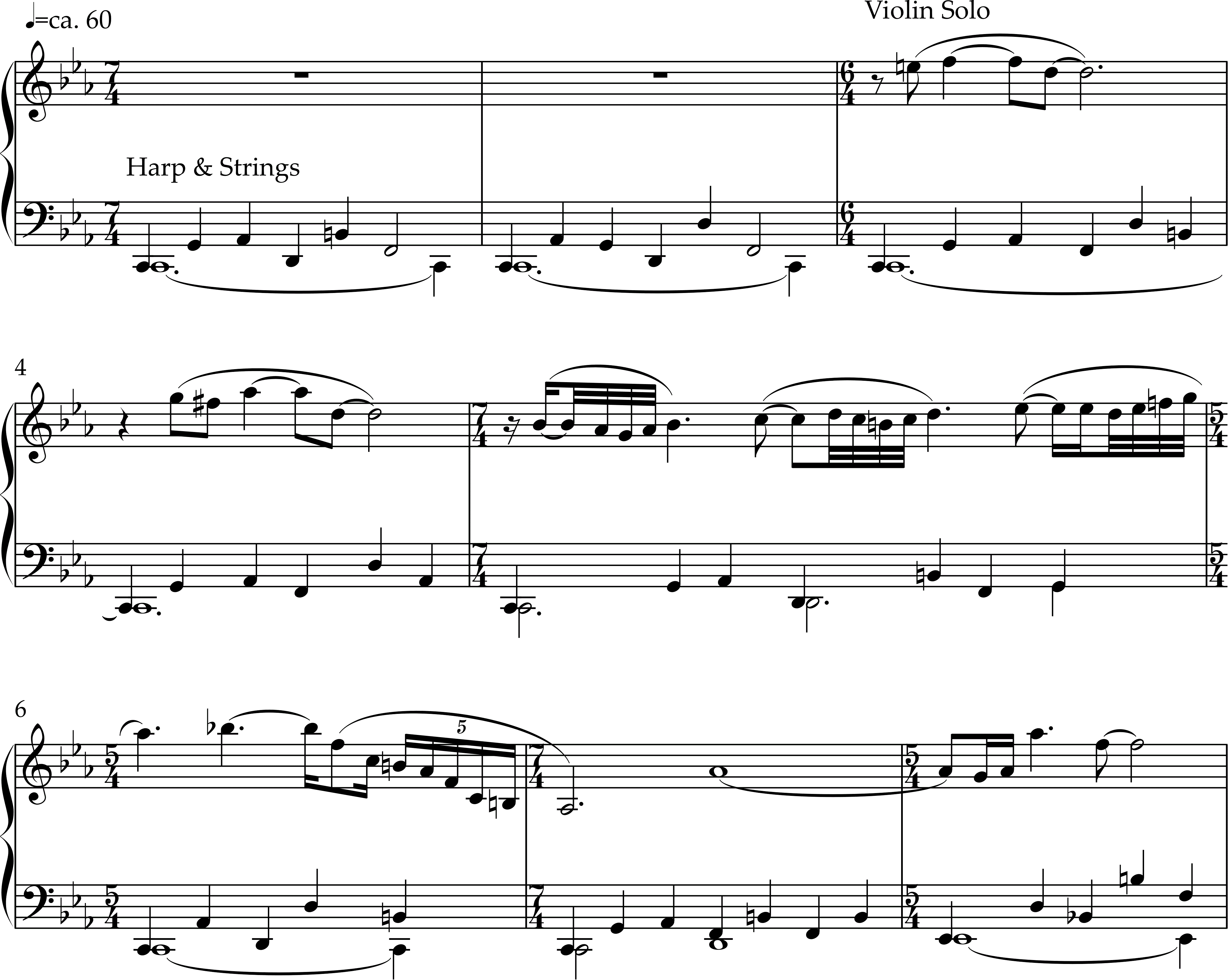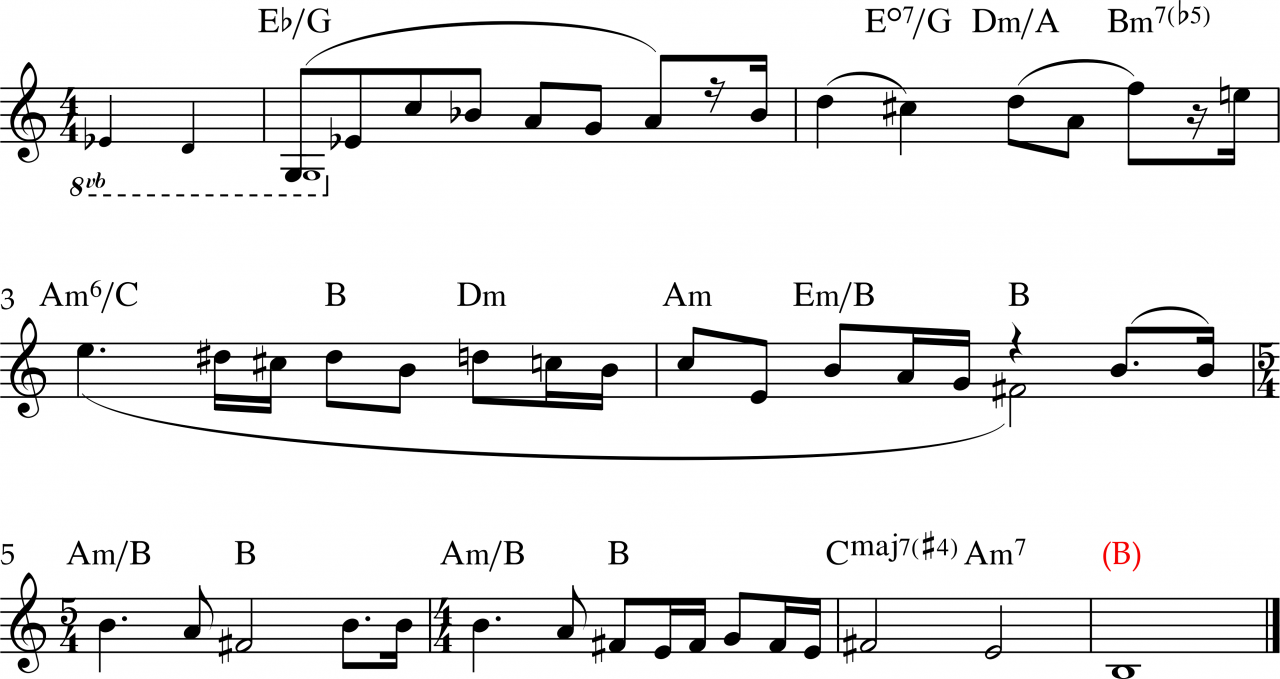-
Posts
733 -
Joined
-
Last visited
-
Days Won
18
Everything posted by Falstaft
-
Perhaps we'll finally get to hear the unperformed "Han Solo and the Princess" arrangement shown in her instagram post from Jan 2019! https://www.instagram.com/p/Bsvqs0mnfsq/?utm_source=ig_web_copy_link Though of course I hope something from TROS is on the table. And how great would it be for a proper action cue to get the ASM treatment?
-
Your prerogative, of course! And I'm the last person who would dispute Williams's Anglophilia. (Though I hear little of RVW in JW's Tuba Concerto specifically, oddly enough.) That said, I find it hard to hear this or other Williamsesque passages from the Symphony, or a few select passages from Metaboles, as being a case of convergent musical evolution via Ravel or Debussy -- which Dutilleux really doesn't sound like to my ears -- much more Messaein and Roussel, with maybe a little Koechlin and a little jazz in there too. Nor can I listen to L'arbe des songes and imagine it wasn't at least in the back of JW's mind when composing Treesong. None of this is meant as a slight to Williams, it's just a cool influence in addition to the other, more well-documented ones.
-
Not sure I've seen this mentioned before, but there's a moment in Williams's Tuba Concerto (1985) that's manifestly based on a passage in Henri Dutilleux's First Symphony (1951). I'll let the excerpts, and sheet music, speak for themselves. (The symphony is staggeringly wonderful, in case you've never heard it.) It's not just the Tuba Concerto, though I think that hosts the passage most directly modeled the Dutilleux's. In general, I think Dutilleux remains an underrated but important influence on Williams's soundworld, particularly in terms of harmony and orchestration.
-
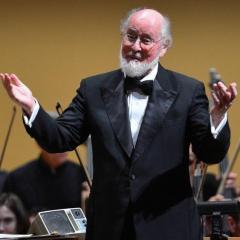
Analysis of John Williams Violin Concerto No. 2
Falstaft replied to Falstaft's topic in JOHN WILLIAMS
Since my mind's on it, here's an attempt at a transcription of the brass chorale from midway through the 2nd movement, the "Thornhille-esque" harmony part -

Analysis of John Williams Violin Concerto No. 2
Falstaft replied to Falstaft's topic in JOHN WILLIAMS
Well, darn, looks like the YouTube upload of the new concerto got taken down. On one hand, I understand fully why this was done. But at the same time, it's depriving many a chance to hear and familiarize themselves with the work. Especially considering prior exposure & study helps enormously if you're going to review a live performance! -

What's JW's "danger motif" (recurring idea)?
Falstaft replied to Jurassic Shark's topic in JOHN WILLIAMS
Need to update that vid at some point with examples from The Post and TROS. and We usually place the first instances of the "Ludlow Motif" towards the final San Diego scenes in The Lost World, but there are a few proto versions earlier on in TLW too, like: God I love this score. -

Tanglewood 2021 season includes several Williams concerts
Falstaft replied to Miguel Andrade's topic in JOHN WILLIAMS
Beautiful summary! It was really touching JW singled out Bryant like this. -
Couldn't help myself. Here's a transcription of the soaring main theme, as it appears after the Jovian/Galaxy's-Edgesque opening. I left out some of the trumpet countermelody stuff around m. 14-16 for clarity's sake, and a few of the chordal inversions are speculative on my part, given the low audio quality at present. Really classic 1980s-sounding Williams, not-so-distant cousin of "The Mission" and a few other occasional pieces. Some of the harmonies and progressions are particularly characteristic -- oddly enough, most similar to the music when Willie is lifted from the lava pit in TOD!
-

Rise of Skywalker suite with Detroit Symphony Orchestra
Falstaft replied to Molly Weasley's topic in JOHN WILLIAMS
Found this on Twitter: Looks like "Rey and Ben" is, or at least begins with, "Farewell" from TROS. -

Analysis of John Williams Violin Concerto No. 2
Falstaft replied to Falstaft's topic in JOHN WILLIAMS
Glad to see such a positive response! I can't promise it'll be quick, but I will try put together a similar listening guide to the other three movements. Until that point, here's something that ought to be quite useful: my attempt at a transcription of the main theme of the whole concerto, the one that occurs prominently in the second and fourth movement, and which some reviewers missed (?!). This particular iteration comes from Mvt. 4, and goes up until its little internal modulation from C to Eb. My rhythmic transcription is a little iffy in places, but the pitches are right, I believe. Top part is solo violin, bottom accompanying harp & strings. Putting this down on paper, I'm struck not only by its affinities with "Moonlight" but also JW's Elegy for Cello and, oddly, Always, with those turn figures in measure 5. Gorgeous music. -
Hi everyone. I thought it might be useful to put together a listening guide of sorts for Williams's second violin concerto. This struck me as appropriate given how it's going to be heard in performance again fairly soon. Also, the piece, particularly its first movement, is fairly difficult to grasp on first listen! I've only put together a guide to the first movement (by far the most challenging), but if this is indeed helpful I'll consider doing the other three--or maybe someone else would like to. It's quite difficult to do this without a score, to put it mildly, so take everything here as provisional. I'm surely missing quite a lot of important details... Listening Guide for John Williams, Violin Concerto 2 MOVEMENT 1: "PROLOGUE" Overall, the most formally loose and spontaneous-seeming movement, fitting given Williams's striving for a "quasi-improvisatory" character. Not a truly non-repetitive piece, however: there are both aspects of inner-movement unity and some subtle prefiguring of material to come, particularly the concerto's principle "leitmotif" introduced in the 2nd Movement. The unpredictability of the music on a measure-to-measure level is compensated by an extremely clear division of 6 large-scale sections, summarized below. More in-depth account: SECTION 1 – INTRODUCTION 0:00 Quiet, slow introduction showcasing harp, supported by bed of strings. Shape of opening harp melody (D3-E3, D3-E3-C3-A3-D3) vaguely anticipates some later motivic details. First harp-based subphrase tonally centered on B♭-lydian, with contrasting Gm6(♭13) in middle. Second, string-based subphrase more dissonant, melodically disjunct. The third, once again harp-based subphrase coalesces on Dmaj6/min chord. 1:11 Introduction of soloist. Violin begins with repetition of note F4, giving bluesy quality to faint D-major tonality maintained by strings/harp. Melodic D tonic flanked by tritones A♭4 & G♯3 above and below. Progressively expands range upward, with what will become a quasi-motivic repeated note figure, here on B♭4 and E♭5. Thinner texture and new harmonies (F♯m and A-dim) and octatonic scale-fragment in violin at 1:50, followed by downwards chromatic cascades and melodic peak of E♭6. Unaccompanied violin sags glumly back downwards. SECTION 2 – FAST AND TURBULENT 2:24 Pulsing, agitated pattern in orchestra midrange on dissonant harmony (A3+B♭3+C4+ D♭4), supported at unpredictable intervals by rising bass-figure starting on low D. Violin gathers energy with repetition of Eb4, proceeds to a flowing, unpredictable musical thought, up to the first of several big orchestral swells marked by dissonant chord and percussive punctuation that swallows up soloist. 2:46 Violin reasserts itself over motivic rising bass-figure. Pace of textural and melodic change speeds up considerably, and music becomes increasingly key-less, violin and orchestra exchanging frenzied, short-lived ideas. Particular prominence to harp, timpani, clarinet. Low-strings trace downwards arpeggio of important Gm9 chord, echoed by violin (3:09), and Em9♭5, F♯dim7. 3:16 Lighter but more dissonant texture. Spiky, progressively accelerating violin writing against unpredictable staccato wind and pizzicato bursts. 3:33 Arpeggiating eighth-note figures in low strings resume, now upwards (D2-B♭2-D3-G2-C3-E♭3, etc.), quickly losing tonal focus as another dissonant tutti swell overtakes violin, followed by brief timpani solo (3:44). 3:46 Purely orchestral climax. Dissonant pitch pyramid assembled over B pedal. Similarly vaulting bass figures under now unified upper strings in octaves on urgent melody, arching upwards in successive swells. Pulsing/sustained brass and string melody help refocus tonality onto D, and downwards chord progression (D--C--B), while dissonant, can be referred to D-center. Ends on a shrieking tutti cluster, similar to opening sonority of section but greatly intensified. SECTION 3 – SLOW AND TRANSPARENT 4:23 Dreamy extended-tertian sonorities, starting with and centered on Gm13 (chord anticipated at 3:11, arpeggiated texture anticipated at 3:33). Violin enters with comparatively lyrical theme with pronounced downwards-moving trajectory. Tonality shifts to Dm, moving stepwise to Fm. Melodic shape heard in passing at 5:00 (F5-E5-G♯5-C5) seems to anticipate the recurring “leitmotif” of movements 2 & 4 -- you know, the one that sounds a bit like "Moonlight" from Sabrina. 5:10 Clear sense of tonality dissolves, violin becomes more agitated, emphasis on dotted rhythms, brief mini-solo of dissonant stops (5:18-5:22). Followed by dense, highly dissonant wind-ensemble writing, drawn from immediately preceding violin solo and segueing back into it. 5:39 Deep, dark minor chords (C♯m--Caug) prepare a catchy but ominous melody for solo violin built on double-stops (parallel minor 6ths), again with contour (A♭4-A♭4-G4-B4-C4) that anticipates shape of recurring leitmotif from mvts 2 & 4. 5:50 Busily spinning passagework for violin and glittering accompaniment, foreshadowing movement 2, recedes to background to allow brief flute solo (B♭4-A4-E5-G5-F♯5-F♯4) in E-minor, suggestive but as far as I can tell not motivically derived from anything else. Violin follows-through with flute melody, seamlessly moving to a… 6:20 Pre-cadenza for violin and harp, again with elements of flute melody (G6-F♯6-A5…B♭5-D♭6-C6-C5) SECTION 4 – CADENZA 6:50 Succession of contrasting technical and expressive ideas, not a huge degree of thematic connectivity with preceding sections though fairly consistent within its own scope. (Substructure: Downwards Em/B♭ chords—leaping octave pairs—compound melody (E6-D♯6-B5-A♯5, D♭6-C6-A5-G♯5)—trills—resigned droop—gathering energy—ascending melody over pedal—arpeggios—trills—melody reminiscent of VC1—ascending passagework maxing out at A6—descending, harsh stops, ending with repeated D4.) SECTION 5 – BROAD AND CLIMACTIC 8:38 Rather spooky melody for violin (F♯4-D5-B♭6-F♯5) over brief suggestion of B-minor. Quickly yields to new material for orchestra, with massed brass, strings in octaves, and thick, repeating wind quasi-fanfares, all grounded over low C-pedal (C-A♭-D♭-G chord?). Classic JW concert music stuff (c.f. For Seiji, Soundings, Heartwood, etc.). Much of this seems to respond vaguely to material introduced in the Cadenza. 9:00 Almost aleatoric sounding passage for harp, solo high winds, pizz strings. 9:09 Emphasis on low winds and strings. Recollection of ascending bass figure from 3:33 (now E2-B2-D3, F♯2-B2-E3) 9:14 Climax building really starts in earnest. Wind chords seem to outline violin’s spooky melody from start of section, against aggressive massed-string section counterpoint, ending on bright, dissonant wind chord. 9:25 Violin solo reasserts self, now more actively interacting with rest of orchestra. Strong sense of rhythmic and harmonic acceleration, climax building pauses after timpani interjection (9:40). 9:48 Final, rapidly attained climax, fastest solo violin writing; impression of huge sweeping motions from whole orchestra, culminating on a huge tutti chord of characteristically JW-dissonant flavor (A-C-E- F-A♭-C♭) SECTION 6 – AFTERMATH AND CODA 10:11 Instantly quiet, clear duet for harp and violin. Clear reminiscence of beginning of Section 3, via repeated harp arpeggio of extended triadic sonority, this time F♯m11(b♭13) instead of Gm11(nat13). Meditative violin solo above, not clearly connected to previous themes. 10:40 Quiet upwards scurrying from violin, reaching high B6, followed by abrupt, staccato motif (second phrase accompanied by four dissonant pizzicato chords from rest of string section). 11:03 Violin settles on sustained low A♭3, against resonant F2-A1 bass support on harp. Full fade-out by 11:16.
-
Haha, very good question! With Williams, it's sometimes hard to tell whether its forgetfulness or just self-deprecation. He's proven to to have a remarkable musical memory when it suits him. As for "Falcon Flight," I suspect the helpful hand of a Star-Wars-based temp track could have been at play. Pure speculation on my part though.
-

What is your number one wish for JW's Indiana Jones 5 score?
Falstaft replied to crumbs's topic in JOHN WILLIAMS
That Williams delivers a product he is pleased with, both on its own legs and the way its treated in the film. -

For Father's Day in the US: Best JW music about father's?
Falstaft replied to artguy360's topic in JOHN WILLIAMS
Perhaps this?: Video just uploaded today by Brett Mitchell. Great channel. -
Bostonians rejoice: Williams conducting his new violin concerto w/ ASM will be opening night for the BSO this season! https://www.bso.org/brands/bso/features/2021-22-bso-season-overview.aspx Amazing, that approaching his 90th year, Williams is not only not slowing down in terms of conducting, but seemingly increasing his activity! Hope he doesn't wear himself out!
-
Sad to see no love for this (long unreleased) miniature masterpiece! https://www.youtube.com/watch?v=nxWgmhYWi1A&ab_channel=JohnWilliams-TopicJohnWilliams-Topic (I ended up voting for X-Mark The Spot, but this would be 2nd)
-

"The Train" (Horner, The Legend of Zorro) vs. The Force Awakens
Falstaft replied to RomanticStrings's topic in JOHN WILLIAMS
Not the first time JWfan has speculated about this particular cue! To complicate matters further, I wonder if Gordy Haab had Horner's "The Ride" and/or "The Train" from Zorro 1/2 in his ear when writing "Han's Kessel Run" -- which I further suspect Williams had in his ear when writing "The Adventures of Han."- 21 replies
-
- Star Wars
- James Horner
-
(and 1 more)
Tagged with:
-
Beautifully put, @Schilkeman. In a way, it's a shame most listeners' exposure to the score is through the concert arrangement, since, while perfectly nice, it leaves out some of the most extraordinary instrumental writing in the score proper. Just take this passage from "Dream Country," from the celesta theme at 6:30 to its transformation in the strings at 7:30. It alone is more breathtaking in terms of its orchestrational skill & imagination than basically anything by any other major living film composer in the past 40 years.
- 63 replies
-
- John Williams
- The BFG
-
(and 1 more)
Tagged with:
-
In introducing the first clip, Lockhart says "We had the chance to talk to John a couple of years ago, in the comfortable setting of Spielberg's private screening room at Dreamworks Studios..." So new to all of us, but not super recent. I think JW refers at one point to the 9 Star Wars scores, so I guess after 2019 at least..
-
It's up, folks, and well worth spending the nominal fee to watch: https://www.bso.org/Performance/Detail/113477 Program includes: Superman March Heidi Jaws Sayuri's Theme Olympic Fanfare & Theme Victor's Tale Stargazers Imperial March Adventures of Han Yoda's Theme Rey's Theme Raiders March Cantina Band (non-Williams arr.) Highlights are the opening montage of clips and photos, many of which I've never seen before, and of course the generous sprinkling of interview clips with JW himself. And the expected incredible sound and high-production value you'd expect from the BSO.
-

The John Williams Jurassic Park Collection from La-La Land MUSIC Discussion
Falstaft replied to Jay's topic in JOHN WILLIAMS
It absolutely does! -

The John Williams Jurassic Park Collection from La-La Land MUSIC Discussion
Falstaft replied to Jay's topic in JOHN WILLIAMS
It's that kind of repeated note pattern followed by a sweep up and back to the beginning that starts showing up all over JW's action scores. In TLW, I think it's in three distinct tracks: Monster on the Loose, Visitor in San Diego, and Ludlow's Demise. (Not sure what the break down is in terms of cues though.) In its first iterations it's wedded to that stomping B-D-F#-D ostinato which I suppose is also very lightly motivic. A few examples: Wow, didn't know that! Stuff like this -- Similar idea, but extremely low: Similar idea, but extremely high: -

The John Williams Jurassic Park Collection from La-La Land MUSIC Discussion
Falstaft replied to Jay's topic in JOHN WILLIAMS
@Jay's encyclopedic knowledge never fails to impress! I think there may be a few other minor bits and pieces that are loosely thematic across JP1 and 2. There's the Hatching Baby Raptor material which is recalled in Life Finds A Way pretty directly. And the Ludlow material and its derivatives in JP2 that pops up in a couple cues. Also a little brass outburst in Rescuing Sarah that recurs in Rialto Ripples, but this is really stretching the definition of "theme" Then again, who could forget the assortment of monstrous growls and grunts like this that are so important to the distinctive texture of Jurassic Park. Assembling a catalogue of JP1 & 2's themes and textures is probably next on my to do list... -

Poll: Favorite JW Concerto and Concerto Movement
Falstaft replied to Falstaft's topic in JOHN WILLIAMS
It is curious that Williams didn't call TreeSong a concerto, since it really is one in all but name. I wonder if Williams was aiming to emphasize the violin's coloristic, evocative nature in this piece. TreeSong, while by no means easy, has less in the way of pure technical fireworks just for the sake of virtuosity than his other concerti. In this way, TreeSong shares yet another thing in common with Dutilleux's L'arbe des Songs, which also was not meant to demand showy technical complexity in the way concerti usually do. (The other connections, which I'm sure have been observed here already, are the sylvan subject matter and the harmonic & orchestrational style; in fact, I would be surprised if JW hadn't studied Dutilleux's concerto closely when writing TreeSong)



